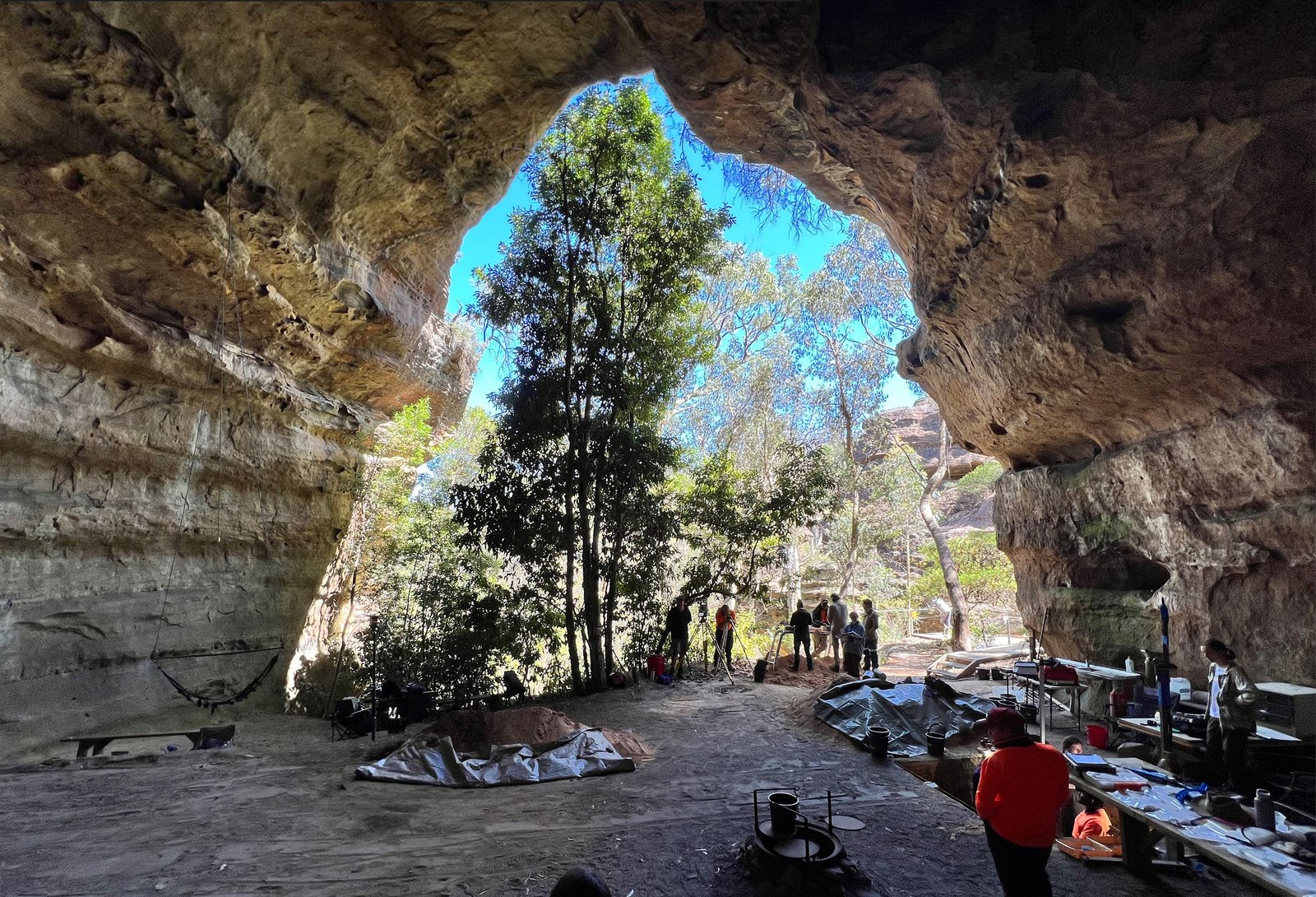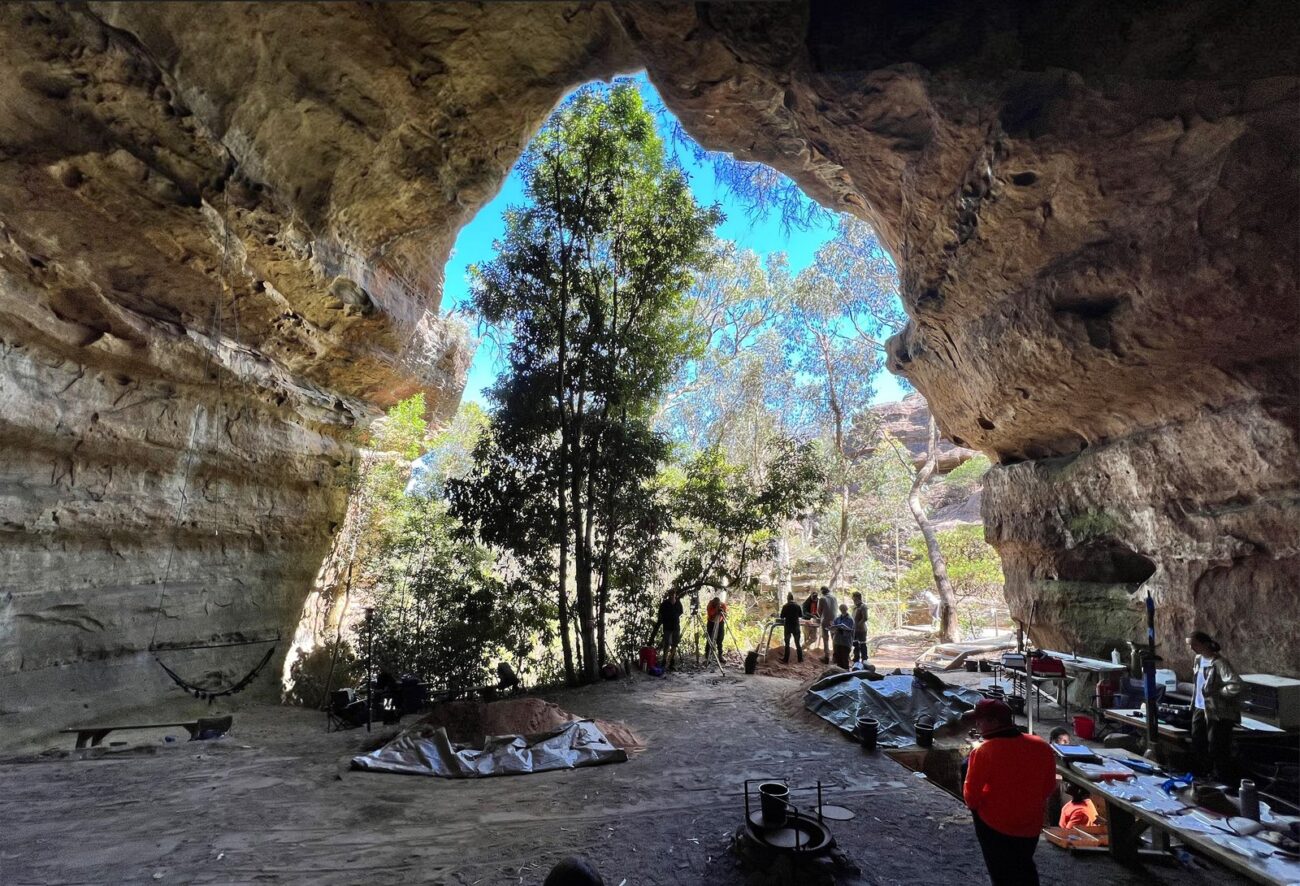A new study in Nature Human Behaviour led by Amy Way, a research archaeologist at the University of Sydney, establishes that sites above 700 meters in Australia were inhabited during the Last Glacial Maximum (LGM)—a period between 26,000 and 19,000 years ago. Way and her team uncovered almost 700 artifacts that provide evidence of repeated occupation dating back to 20,000 years ago and connections with people in nearby regions.
The findings overturn the belief that the cold climate and sparse landscape at these elevations were barriers to survival on the continent. Throughout the entire research process, Way and the research team collaborated with Aboriginal communities that hold traditional connections to the region, highlighting the importance of centering Indigenous and local communities in archaeological research.
The LGM was the coldest period of the most recent ice age. At that time in the Blue Mountains, temperatures above the periglacial limit—the altitude above which conditions were too cold and barren to support human habitation—were at least eight degrees Celsius colder than today. The treeline sat hundreds of meters below the cave, leaving little firewood, and water sources were frozen in the winter. Despite these conditions, the people who came to Dargan Shelter built hearths, shaped tools and carried stone from sources as far as 150 kilometers away.
The excavation took place in Dharug Country in the Blue Mountains, a region of deep importance to many Aboriginal communities. Custodians from Dharug and other Aboriginal communities called the Wiradjuri, Gomeroi, Darkinjung, Dharawal, Wonnarua and Gundungara maintain traditional connections to the land, and their knowledge and input was central to the research. Wayne Brennan—a Gomeroi knowledge holder, First Nations mentor in archaeology at the University of Sydney, and one of the study authors—initiated the research and helped obtain the excavation permit.
The study authors excavated Dargan Shelter, a cave 1,073 meters high in the Blue Mountains. The researchers and First Nations members uncovered several hearths and 693 stone artifacts dating from around 20,000 years ago to 6,000 years ago. Importantly, collaboration with Aboriginal communities did not end with excavation. The study promises that all artifacts will be returned to Dharug custodians, with the Advisory Committee “deciding how they will be reburied or displayed.”
During the LGM, Australia had many periglacial sites—areas near glaciers that experience cold climates and short periods of freezing—whether in Tasmania, the Australian Alps, or the Eastern Highlands, where the Blue Mountains and Dargan Shelter are located. Evidence of human occupation during the LGM had previously only been found below the periglacial limit, at sites in Tasmania and the Australian Alps. Findings from one Blue Mountains site suggested occupation above the periglacial limit, but the dating was disputed, leaving uncertainty about human occupation of the area before this 2025 study. Before Dargan Shelter, the earliest accepted findings of high-altitude occupation in Australia dated to around 14,500 years ago. The Dargan Shelter excavation provides the earliest accepted evidence of such occupation, dating back to around 20,000 years ago, during the LGM.

Over three seasons in 2022 and 2023, Way and her team carefully removed layers of sediment up to a total depth of 2.3 meters, recording the location of each artifact in three dimensions and sieving sediment to catch even the smallest flakes—thin pieces of rock removed while making or sharpening stone tools.
Among the uncovered artifacts was a sandstone grinding slab, dating to around 13,000 years ago. The slab showed two grooves, likely worn down from shaping and sharpening bone and wood tools that the cave’s inhabitants used for making leather clothing or jewelry, carving or hunting. An 8,000 year old stone anvil was also uncovered, with impact marks suggesting it was used for cracking nuts and seeds open. The team also found many heat-damaged artifacts and concentrations of ash and charcoal, indicating that hearths were built and used throughout Dargan Shelter’s occupation.
Charcoal from the uncovered hearths was radiocarbon dated, producing a timeline of repeated occupation from 20,000 years ago to just 330 years ago. Pollen analysis showed shifts from treeless, tundra-like vegetation during the LGM to woodlands as the climate warmed. X-ray fluorescence analysis matched the chemical signatures of stone artifacts to sources up to 150 kilometers away from the cave, revealing long-distance mobility and connections across southeastern Australia. The study authors write that this evidence suggests the region “may have been a stopping point for groups spending substantial time travelling along the mountain range during the warmer seasons” to perform ritual practices or access certain resources. Brennan told The Guardian that the cave was likely a “guesthouse on the way to a ceremony place.”
The researchers paid close attention to Dargan Shelter’s stratigraphy—the study of layered sediments—throughout the excavation. Each layer of earth in the shelter represents a different period of human activity and environmental conditions. By documenting every artifact’s position within these layers, the researchers were able to build a chronological sequence of occupation. The deepest deposits contained artifacts from the LGM, while higher layers showed evidence of continued use up until 330 years ago.
In an interview with GlacierHub, archaeologist Dylan Davis, who is a postdoctoral research scientist at the Columbia Climate School and Lamont-Doherty Earth Observatory, highlighted the rarity of “the degree of detail and number of acceptable radiocarbon dates from throughout the entire stratigraphic sequence” at Dargan Shelter. Davis explained that “the level of preservation . . . is often a severe limiting factor in making any definitive claims of the archaeological record,” so the preservation at Dargan Shelter is “quite impressive,” with over 20 acceptable radiocarbon dates and showing a continuous sequence.
The Dargan Shelter sequence joins recent findings in the Ethiopian Highlands, the Tibetan Plateau, Spain and Mexico showing people adapted to high-altitude, periglacial landscapes much earlier than once thought. By documenting occupation at over 1,000 meters during the LGM, this site situates Australia within these broader cultural sequences and shows, Davis said, that “landscape features we often think of as barriers did not actually stop people from moving. This changes our understanding of the inhabitation of Australia, and also forces us to reconsider such ideas in other areas around the world.”
The Dargan Shelter excavation was done in close collaboration with Aboriginal custodians of the Blue Mountains from the very beginning. As noted in the study, it was initiated by Brennan and Way “to bring archaeologists and local custodians together to assess the cultural importance of previously un-excavated rock shelters in the Blue Mountains.”
A Blue Mountains Indigenous Advisory Committee was formed for the project, including representatives from six Aboriginal communities that hold traditional connections to the region. The study highlights that committee members partnered “in the design, implementation and reporting of project results” and approved all analysis and excavation.
The Dargan Shelter study represents a significant step forward in archaeological research. It places First Nations groups at the center of decision-making about their heritage and sets an example for how future climate history research around the world can align with ethical and cultural responsibilities to communities. The study also aligns Australia with evidence of early high-altitude human occupation across the Americas, Europe, Asia and Africa, deepening our historical understanding of human movement and adaptation to periglacial and extreme environments.
Source link
Guest news.climate.columbia.edu


